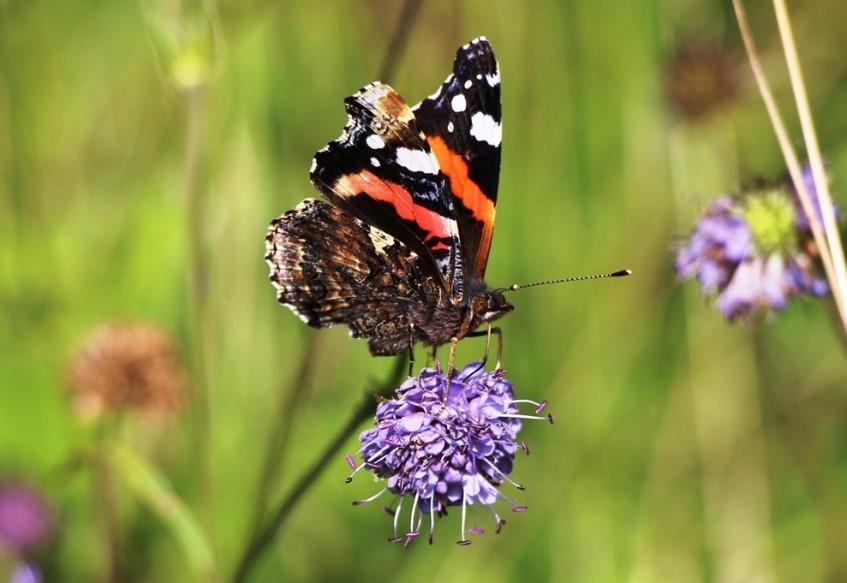Butterfly monitoring
The Clwydian Range and Dee Valley Area of Outstanding Natural Beauty have been on a mission to monitor our butterflies, and we now need your help.
Surveying butterflies is important because the data collected can be used to show the relative success of local habitat management. Butterflies have a very rapid lifecycle and high sensitivity to environmental conditions. Their dependence on particular plant species and habitats gives a good indication of where to direct conservation effort and assess how effective current conservation work is.
A good example of a butterfly species that dependant on its habitat and other species within it, is the common blue butterfly.
Common blue butterflies lay their eggs on their caterpillar’s food plant which is usually the Common Bird’s-foot trefoil. After around 8 days these eggs hatch and the caterpillars will feed on this plant.
While the caterpillar is feeding, it will secrete a honeydew substance which attracts ants. In return for the constant supply of honeydew, ants will protect the caterpillar from predators. After around 6 weeks the caterpillar will form into a chrysalis on the ground or at the base of its food plant. Ants that find the chrysalis often bury it which again will protect it from predators.
After two weeks the butterfly will then emerge from the chrysalis as an adult butterfly. They will then find a mate and the cycle will start again. This particular species will usually only live for 3 weeks.
Without the bird’s-foot trefoil and the ants, this species of butterfly would not be able to survive.
Butterfly surveys have been set up at both Loggerheads country Park and Prestatyn Hillside.
The Loggerheads Country Park transect was set up in February 2017 and was surveyed throughout the season. 22 different species were recorded, with 3 being Species of Principal Importance.
The Prestatyn hillside transect was set up at the end of 2017. Training of local people has taken place and the transect is now being monitored by volunteers. The data collected on the transect will be analysed at the end of the 2018 season.
It is hoped more transects will be started within the AONB by trained volunteers. Getting volunteers involved has made surveying more sustainable and has also educated a new audience about the importance of our beautiful butterflies.
If anyone is interested in surveying butterflies in their area, please get in touch with Vicky Knight via e-mail Vicky.knight@denbighshire.gov.uk.